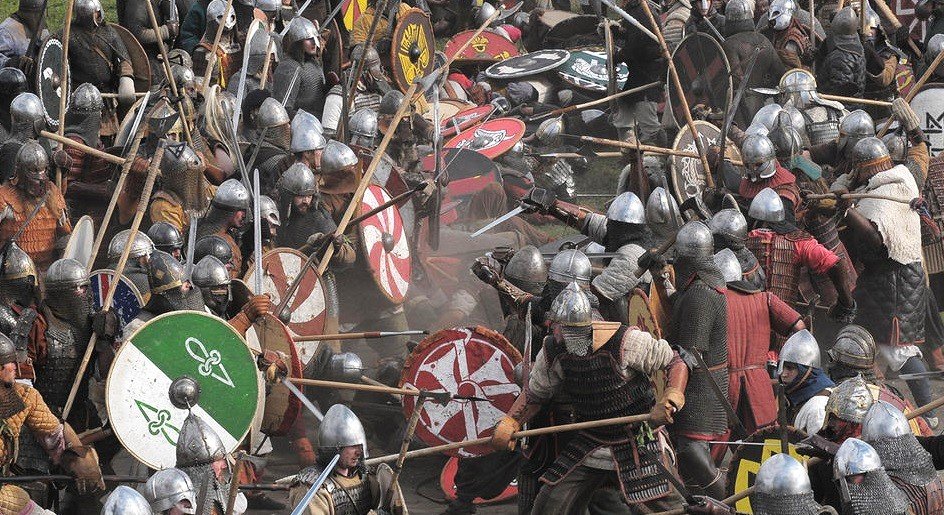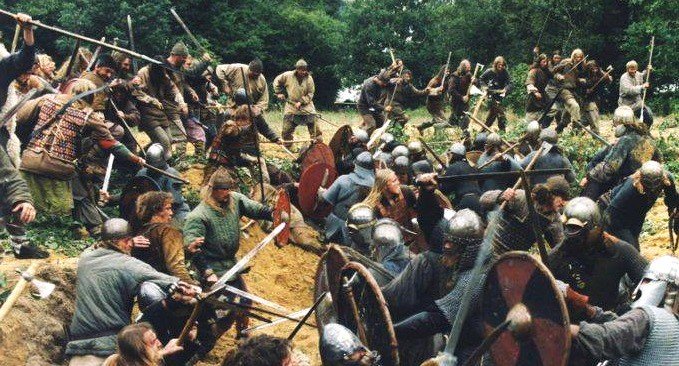The Viking warriors way of fighting, as a group and individually, was good enough and adaptable enough, to tackle all styles of combat and all types of weapons.
Vikings had two arms, two legs, and weapons, just as their adversaries had, and they were just as vulnerable as the warriors they came against, but what set the Viking warrior apart from everyone else, was how they used what they had.
One of the Viking warrior’s greatest strengths was their willingness to learn from other cultures. Vikings were eclectic, and combined the knowledge and experience they gained from fighting a wide variety of enemy to their already impressive arsenal.
Viking combat training, combined with their powerful mindset and spirit, created in the harsh lands of the North, is what lay behind how Vikings became the world’s best warriors of their time, and enabled them to achieve their goals.
Viking warrior skills included unarmed close combat fighting, close combat fighting with weapons, such as a dagger, saex, spear, axe, sword and shield, and long range weapons such as bow and arrow, and spear and stone throwing.
Viking warriors fought on land and at sea, and they fought with whatever they could afford, make, borrow or steal. They could fight in all types of armor, ranging from leather to metal, and their Viking shield could be used for both defense and offense.
In battlefield combat, a Viking warrior could grapple if he lost his weapon, or if everything else failed. Empty hand skills were more difficult to execute with armor, but still effective, and a warrior could strike, throw, or secure an opponent with a lock or grip.
This would enable a Viking warrior to either finish an opponent with the hands or feet, or give him enough time to get out a short knife and thrust it into one of the unprotected open areas of the armor.







